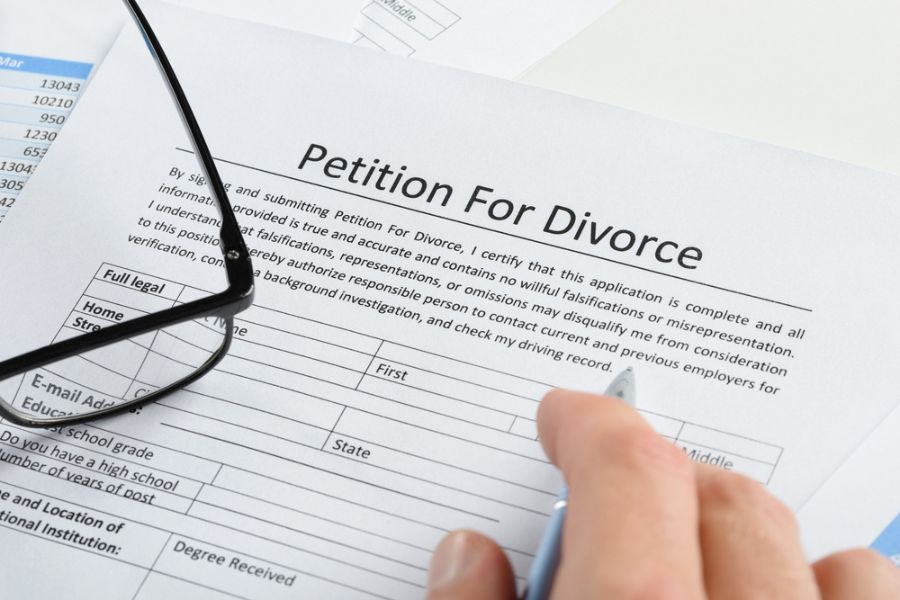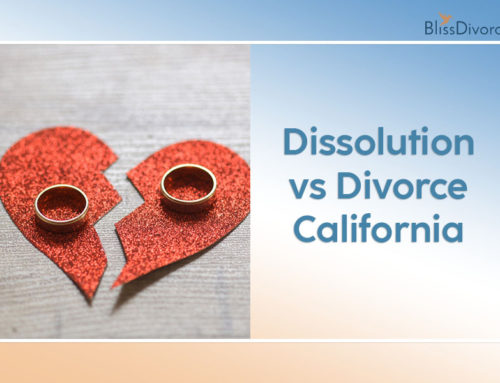Going through a divorce process might be devastating, stressful, and expensive. That’s why many people consider DIY divorce options. However, it can be scary to take on such an important and complicated task.
This article will inform you of everything you need to decide whether DIY divorce is for you, and how to help you be successful. We’ll demystify the process so you can gather the courage to make the first step.
Continue reading to discover when DIY divorce in California is your best option and it might help you!

Source: shutterstock.com / Photo Contributor: Daniel Jedzura
What Is A DIY Divorce In California and How Does It Work?
In simple terms, a “Do it yourself” divorce is filing for divorce without a lawyer in California. There are several steps you have to follow to complete this process:
- Filling out the required forms
- Filing with the court
- Serving papers
- Waiting for a response
- Receiving a response
The court system in California provides amazing support to ease the process. All the required forms can be found on their website to make the process easier. Furthermore, there’s a step-by-step guide to starting a divorce for those who still feel lost.
If you don’t want to deal with the paperwork, many online divorce services might help you.
Filling out required forms
Before filling out the forms, you must prove you’re eligible for divorce in California. It’s required of you to have lived at least six months in this state. Additionally, you must be in your county for three months.
The first three important forms to fill out are:
- FL-100: Petition – Marriage/Domestic Partnership
- FL-110: Summons (Family Law)
- FL-105: Declaration under Uniform Child Custody Jurisdiction and Enforcement Act; this form is optional and only needed if you have children together
Lastly, you should check if your court requires any extra forms. After you’re done, don’t forget to make two copies of each document.
Filing with the court
In today’s technological age, many courts have e-filing to simplify the process. Other courts may ask you to mail the original and two copies to the clerk.
You must include the $435 filing fee or fee waiver request during this process. Don’t forget to use a self-addressed stamped envelope so that the clerk can send the copies back to you.
Serving papers
Serving papers requires you to choose an adult to deliver the divorce copies to your spouse. It can be someone you know, professional servers, or county sheriffs.
After they’ve delivered the documents, the server has to fill out an FL-115 form. The Proof of Service of Summons should contain information about the delivery, including the place and time.
Remember that serving papers by mail is only an option if your spouse lives in a different U.S. state.

Source: shutterstock.com / Photo Contributor: Portrait Image Asia
Waiting for response
After serving the papers, there’s a 30-day timeframe in which your spouse should respond. During this period, they can decide what to do, fill out the forms, file, and serve the response.
If your domestic partner doesn’t respond within the 30-day timeframe, you can ask for a default. This means that the process could go on without your spouse’s input.
Receiving response
After you’ve received a response, you’ll be asked to share your financial information. This includes your income, debts, and property.
The four forms you’ll need are:
- FL-140: Declaration of Disclosure
- FL-150: Income and Expense Declaration
- FL-142 or FL-160: Schedule of Assets and Debts or a Property Declaration
- FL-160: Property Declaration (optional)
Once you’ve completed the necessary paperwork, all that’s left is to finalize the divorce.
How Do You Know If DIY Divorce Is a Better Option For You?
Several criteria can determine if DIY divorce is for you:
- Negotiation
- Debts and assets
- Children
Negotiation
The negotiation process is the most important factor during any divorce process. If you and your domestic partner agree on the terms, this is the right choice for you. However, if either of you is out for revenge, it’s best to settle it in court.
A great way to come to an understanding is by divorce mediation. Thanks to a neutral third party and online options, you can save yourself the arguments. Plus, you’ll save yourself on emotional toil and extra costs.
Debts and assets
Another thing to look out for is the debts and assets you have. Having fewer belongings is better if you want to start this online process. With only a few items on the table, reaching an agreement with your spouse is easier.
Those with many assets and debts may get lost and confused in the process. This often leads to forgetting important belongings and financial obligations.

Source: shutterstock.com / Photo Contributor: Andrey_Popov
Children
Having children always complicates the divorce process. Besides the pile of paperwork, you also have to worry about your kids’ best interests.
That’s why starting an online divorce is easier if you’re not a parent yet. Custody battles should not be taken lightly since much thought goes into them. However, you can again consider mediation to make custody simple.
DIY Divorce In California Without Paperwork
Seeing how complicated the paperwork can get, you may get overwhelmed by the process. However, filing for an online divorce can be effortless and time-efficient. Due to the many online services available, this process is usually simplified.
Some great choices that will help you figure out all the necessary documentation are:
- BlissDivorce.com (best overall option and #1 customer rated)
- My Divorce Papers
- Complete Case
- Divorce com

Source: shutterstock.com / Photo Contributor: zimmytws
Conclusion
Now that we’ve reviewed the process and benefits, it’s up to you to decide if online divorce suits you. Don’t forget to try divorce mediation if you need to reach a fast agreement.
Lastly, take a breather and focus on the freedom you’ll get after these trials are over.
*This article is for informational purposes only and is not intended to provide legal advice. If you require legal advice, please contact a licensed attorney in your local area.




